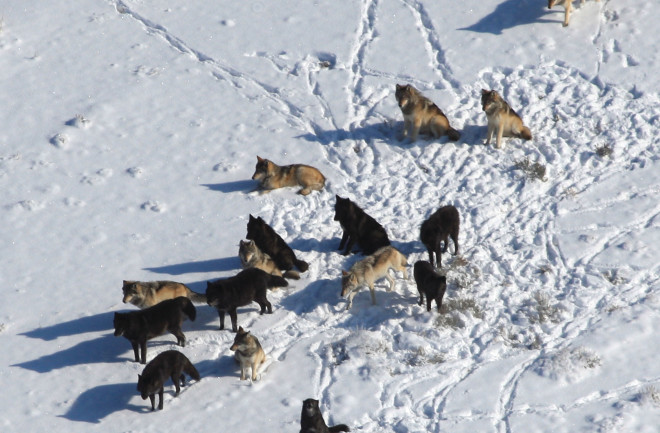If you take a peek at a pack of gray wolves, you might see a sea of gray fur. That said, you might also see a stunning array of silvers and soots and smoky blacks, as well as an assortment of additional shades from brown to beige to white.
Much more striking than the colors themselves is their cause. In fact, according to a paper published in Science this fall, some scientists think that the patterns of coat coloration among North American wolves are actually a sign of past sicknesses.
More specifically, these scientists say that the colors of wolves signal the strength of their immunity to specific viruses, allowing individual wolves to identify which partners will provide them with resilient, virus-resistant pups.
Why Wolves Change Colors
Wolves come in an assortment of colors, though they’re generally gray and black in North America, with a greater prevalence of gray tones to the north and a greater prevalence of black tones to the south.
“In most parts of the world, black wolves are absent or very rare,” says Tim Coulson, a study author and a biologist at the University of Oxford, according to a press release. “In North America, they are common in some areas and absent in others.”
The source of these variations in coat color, as well as their patterns of prevalence, stumped scientists for years and years, though they weren’t without their theories. For instance, some toyed with the thought that the variations in wolves’ fur signified their fitness as potential partners, an adaptive phenomenon seen across a plethora of plant and animal species.
And, as it turns out, those specialists were on the right track.
A team of researchers resolved to scrutinize the “fitness” theory of wolf fur because of the realization that one of the same genes that influences the coat color of wolves, CBD103, could also inform their immune responses to a variety of viruses.
Assessing populations from across North America, and in Yellowstone National Park in particular, the team revealed that black wolves retain a stronger resistance to canine distemper virus (CDV), an acute and frequently fatal infection from the same family of viruses that causes measles and mumps. In addition to that, the results revealed that these shadowy-shaded wolves are also particularly widespread within populations where CDV outbreaks are an ordinary occurrence.
Starting with information from 12 separate populations from North America, the team first investigated whether the presence of CDV antibodies among wolves — which would indicate which individuals contracted and overcame CDV at some point in the past — was associated with certain coat colors. Soon, they identified that the individuals with these antibodies tended to be black, suggesting a stronger ability to survive the sickness among wolves with darker-colored coats.
Not only that, the team also found that wolves with black fur, as opposed to gray, were much more prevalent in areas with frequent flare-ups of CDV, supporting the theory that these wolves are more immune to some illnesses.
Read more: Parasites May Create Wolf Pack Leaders in Yellowstone
To solidify their findings further, the researchers then turned to Yellowstone National Park. There, their analysis of over 20 years of information on wolf populations suggested that some wolves specifically select their mates to maximize the probability that their pups are black (and therefore immunologically prepared) in areas where CDV surfaces and resurfaces regularly.
In fact, this selective mating manifests in a preference for black-gray pairings, which, according to the team, are observed much more frequently in Yellowstone — where outbreaks appear at intervals of five years-or-so — than in areas with fewer spates of sickness.
Read more: The Pictures That Saved Yellowstone
Ultimately, the team adds that these results fit with findings on an abundance of other animals, including insects, fish and birds, whose colors represent their ability or inability to resist illnesses.
“What I love about this study is how we have been able to bring together experts from so many fields and a range of approaches to show how disease can have remarkable impacts of wolf coat color and behavior,” says Peter Hudson, another study author and a biologist at Pennsylvania State University, according to a press release. “We are learning that disease is a major evolutionary driver that impacts so many aspect aspects of animal population.”

